t
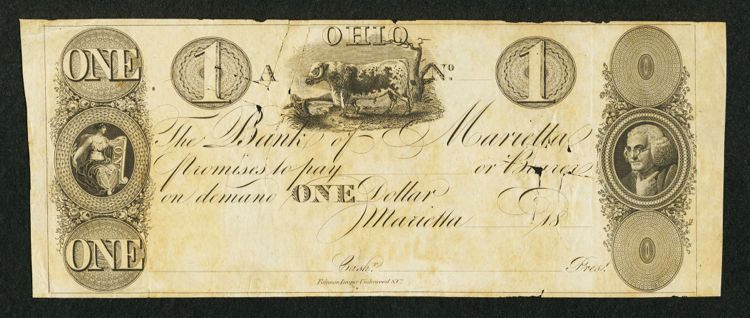
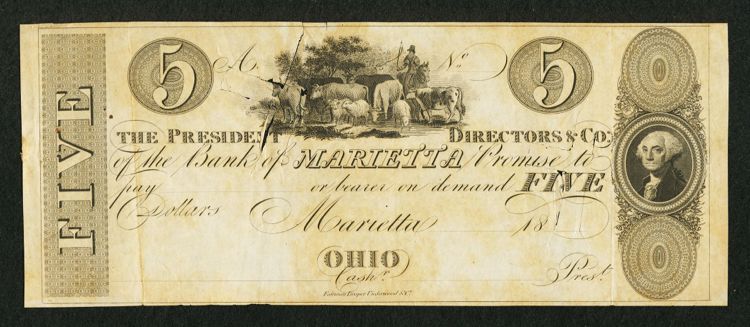
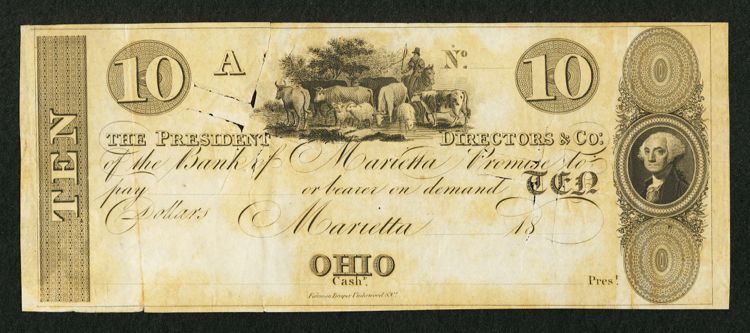
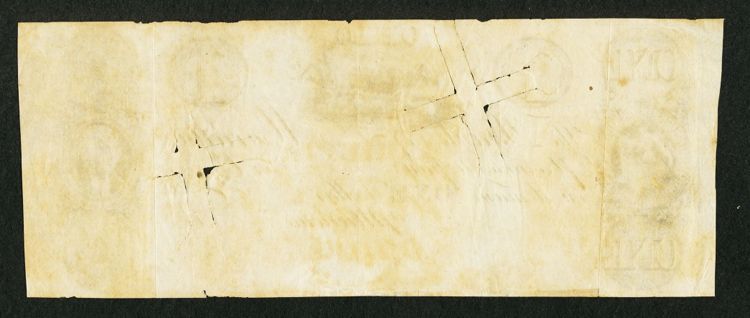
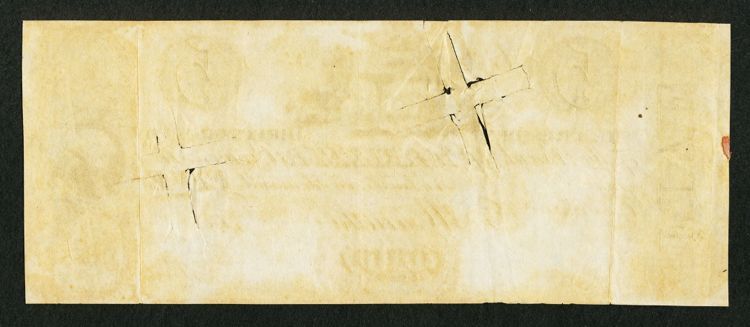
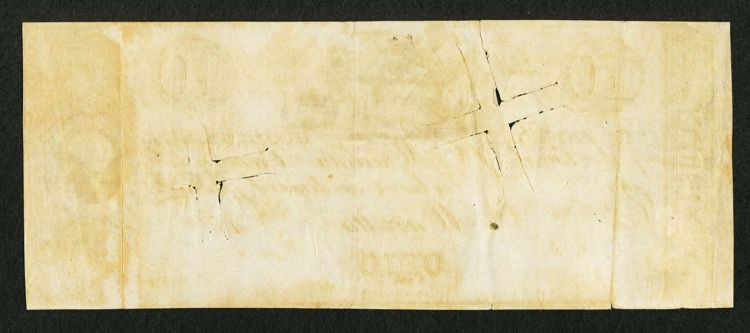
Why has this obsolete been branded as COUNTERFEIT?
The resurrection of the "Obsolete Street Scenes" thread and the recent acquisition of a $2 obsolete note from The Hampden Bank (MA-1265-G20 or C20-UNL?) have made me re-exam the note below.
This note that is branded as being COUNTERFEIT by The Suffolk National Bank does not look like a counterfeit note to me. It just does not have the attributes of a typical contemporary counterfeit note. In addition, Haxby lists only the genuine G20 and not a corresponding counterfeit. Although Haxby lists a few altered and spurious notes, he does not list ANY counterfeits of the genuine notes issued by the bank. The Suffolk bank has branded obsolete notes as "broken" or "worthless" if a bank became a "broken bank." However, this is not the case with the Hampden Bank since it became The Hampden National Bank of Westfield (Charter #1367) in 1865, shortly after the Suffolk Bank went national (#629).
For comparison, I also show Heywood's $2 note, a $5 (G40) note from the Heritage archives, and a $1 (G10-SENC) that I acquired a number of years ago.
So what gives in this case?
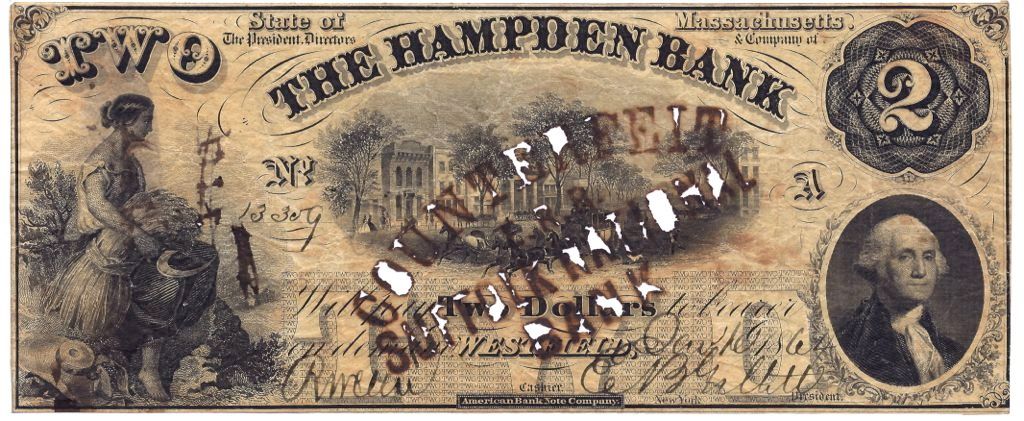
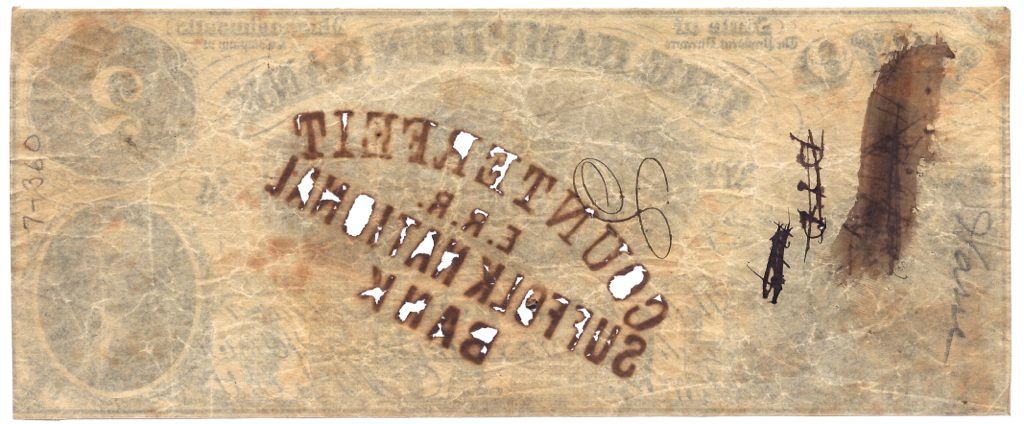
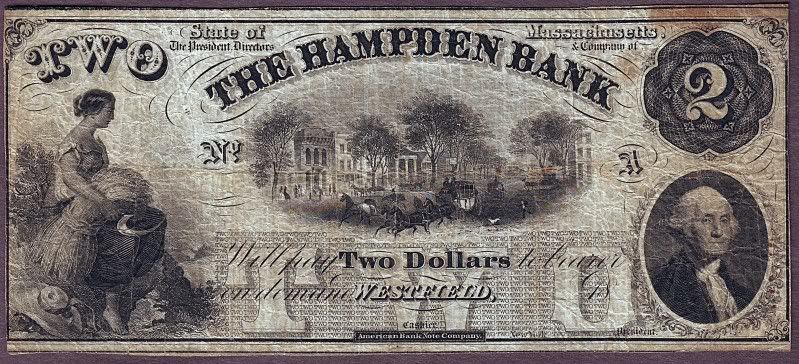
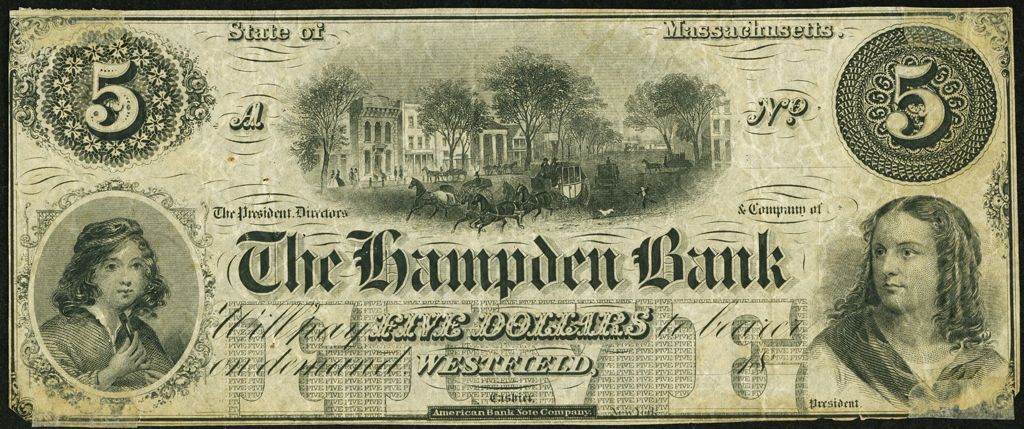
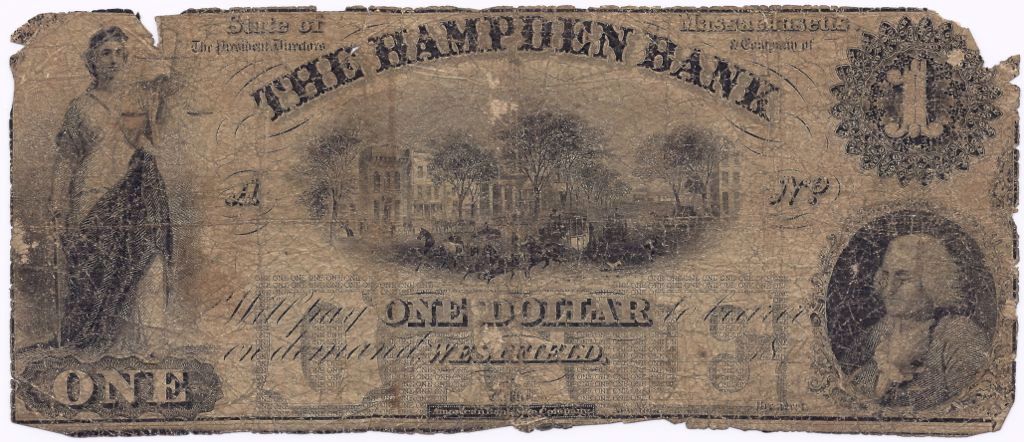
So here are two large images of the two different types of $1 notes. There are many obvious differences between them. First both show Moire patterns, that is, both are engraved. The Moire patterns in the left panel give the most visible distinguishing characteristics. That is, the positions of the oval Moire pattern at the top is very different on the two notes.
As JimFitz noted the "detail around the Eagle, namely the flowers below the right wing" are very different. There are many more. For instance look near the feet of the eagle. This is what I also noted initially, and the Haxby images are good enough to distinguish the two type. I also therefore assumed that the originally posted note was genuine.
However, take a closer look at the high-resolution images. Your first thought will probably be: But Bernie you are showing an A versus an H plate note. Yes, sometimes the different plates are slightly differently engraved, especially the filigree around the vignettes. This is NOT true in this case. I have images of both A and H plates for both types of notes shown here!
Do your still think that the original note is genuine?
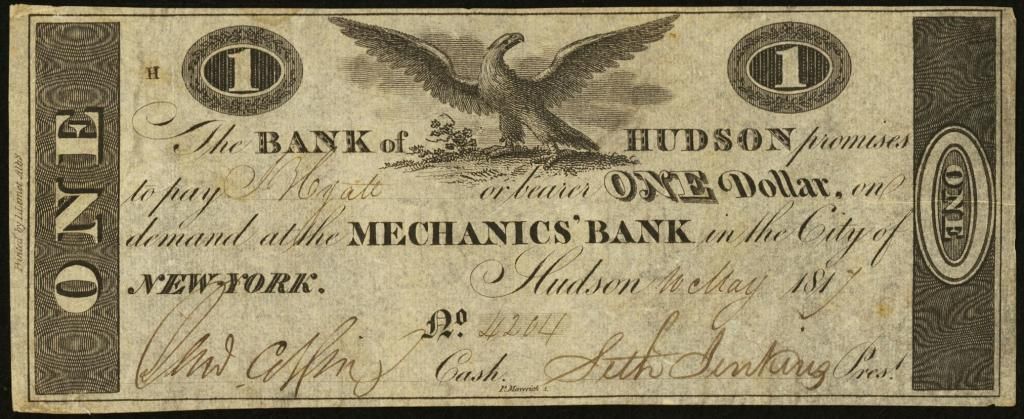

Here is another example that appeared in a 2001 Heritage auction ($172) with the following description and pictures:
“New York, NY- Continental Bank $1 G2 Proof. A scarce non-ABNCo Proof, albeit with some small repairs. Uncirculated”
Note what a back image can tell you.
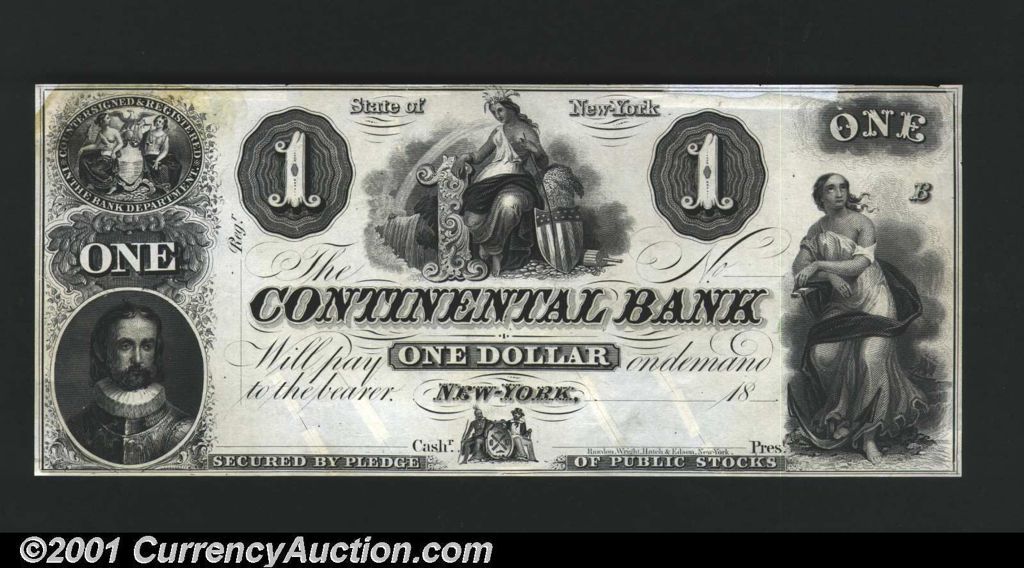
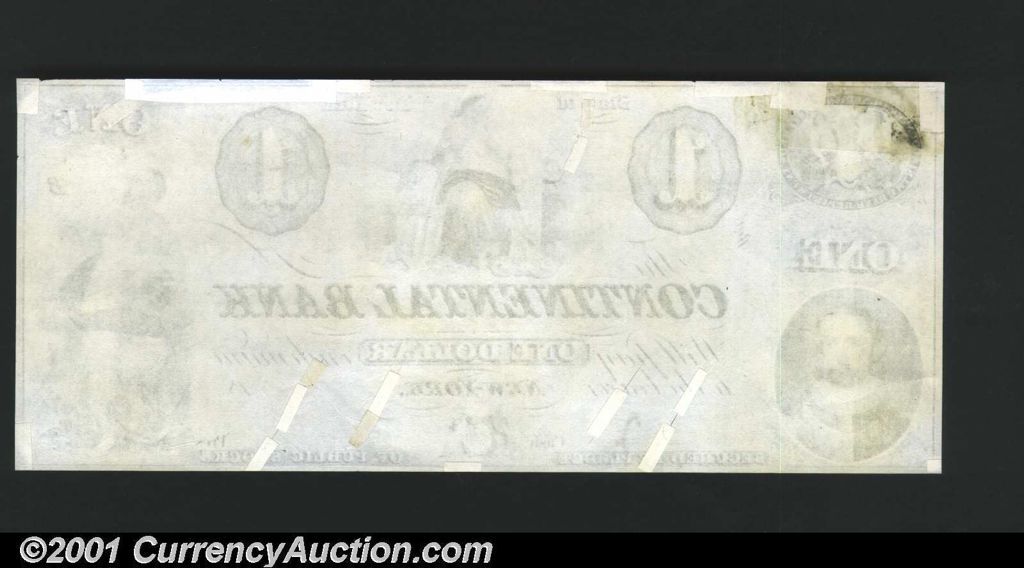
It appeared last year at a Stacks auction ($1285) with the following description and pictures:
“New York, New York. Continental Bank. ND (18xx). $1. About Uncirculated. Proof. (NY-1550 G2) Rawdon, Wright & Hatch New-York.
India paper mounted to album paper. Woman at top center and lower right. Slit cancels at the signature panels.
Some edge and corner repairs are observed with bordering designs redrawn, Estimate: $300.00 - $500.00
Pedigree: From the Peter Mayer Collection Part II.”
It’s a wonder what a different scanner can do. You can barely see the large slit cancellations. No back scan.

It is also in the upcoming Knight auction with this description:
“New York Continental Bank $1 Proof. PCGS Apparent Ch. New 63. A very scarce non-ABNC proof that has great margins
and is superbly printed. Printed on India paper and mounted onto album paper which explains why there is minor damage
in the corners from when it was removed. Also cut cancels repaired at bottom along signature lines.
'Secured by Pledge of Public Stocks' seen along bottom below the signature lines. Est $400.00 - $800.00”
Again no back scan.
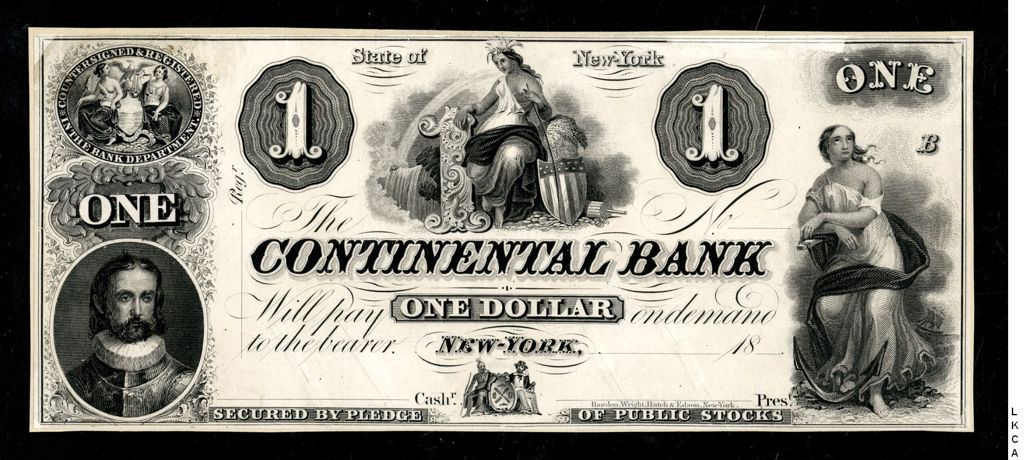
Bernie
Always looking for material from the Niagara river region.
0
Comments
myEbay
DPOTD 3